Review: North Shore Chamber Music Festival: Four Seasons and New Generations
Last weekend the final two concerts of the North Shore Chamber Music Festival took place in the Chicago suburb of Northbrook, culminating in a performance of Vivaldi's "The Four Seasons."
Vivaldi, of course, was writing quite literally about the four seasons of the year, but NSCMF also makes one think of the seasons in life, as it brings together a remarkably inter-generational group of artists. During these last two days, there was composer/violist Atar Arad, celebrating his 80th birthday as he performed and premiered one of his own pieces. The Ariel Quartet - in its prime, playing a piece that spoke to the final season in Mendelssohn's life. And there were three young emerging artists who were featured as soloists in the Vivaldi's most enduring work for violin. Here are some of the highlights from those evenings.
On Friday night was the premiere of "Avivim," a duet written especially for the Festival by Arad, who performed it with clarinetist Ilya Shterenberg. As he explained from the podium, the name of the piece is the plural form of the Hebrew word for "Spring." This was a set of six miniatures, each with its own little take on spring: a joyful Scottish dance, a song, a "humoresque," an elegy. Arad and Shterenberg played the piece with humor and a sense of collegial familiarity.
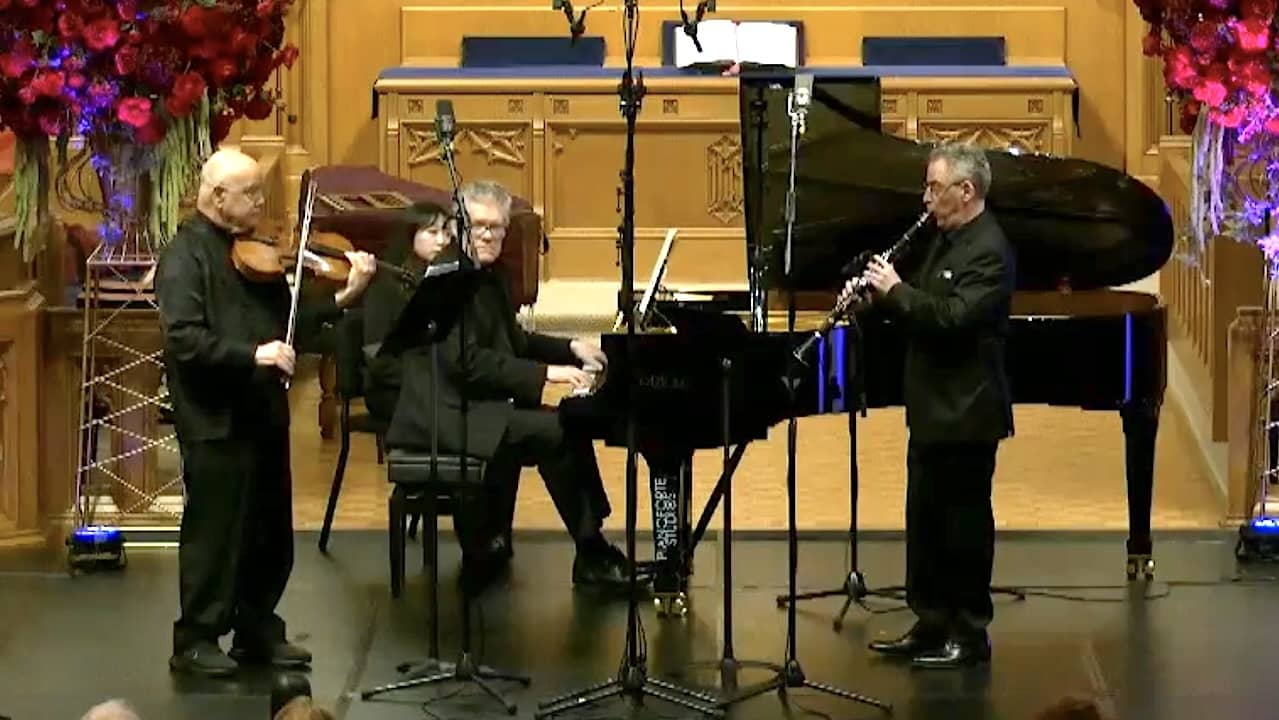
Violist Atar Arad and clarinetist Ilya Shterenberg, with pianist William Wolfram. (Photo is actually from their performance of Robert Schumann's "Fairy Tales," Op. 132.
In perhaps a testament to his humor, Arad planted short spring-related musical easter eggs throughout the miniatures: a tiny "Rite of Spring" reference in the clarinet during the first one, an "Appalachian Spring" quote in the second, a line from Mendelssohn's "Spring Song" from the Op. 62 "Songs Without Words" in the fifth. These snippets (and I probably didn't get them all) were finished almost before one could notice, and I only realized at the end that they all related to spring!
Prior to that piece, the Ariel Quartet played a piece that brought an entirely different sentiment to the fore: Felix Mendelssohn's String Quartet No.6 Op. 80 in A minor. In introducing the work, violist Jan Grüning noted that this was the composer's last completed work - written in his grief during the six-month span between his sister Fanny's death age age 41, and his own at age 38.
Something in the way that the Ariel Quartet played the piece brought vivid images to my mind - this was intense music, intensely played by violinists Gershon Gerchikov, Alexandra Kazovsky, violist Jan Grüning and cellist Amit Even-Tov.
The first movement was so fast - gestures like a tremolo passing from one instrument to the next felt like shivering, and the runaway accelerando at the end felt like the middle of the night, when life's anxieties truly get the better of you. There was no respite in the second movement, the mood is dark, like the monster is in the closet, stewing. Every time the music tries to calm down, it doesn't work; the foreboding always creeps back.
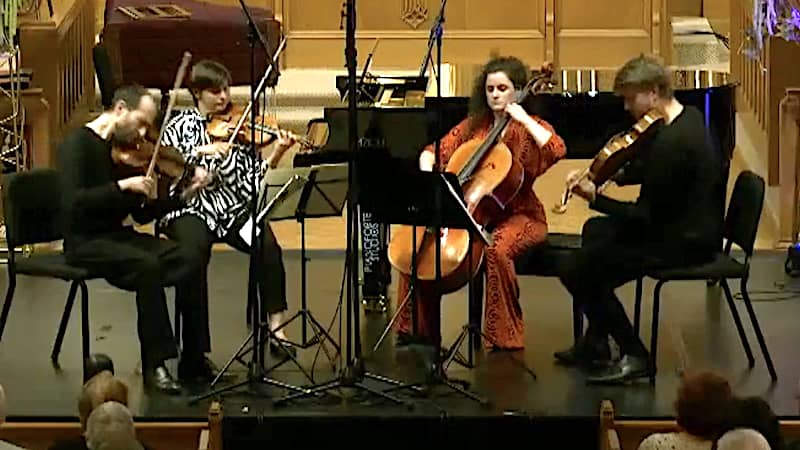
The Ariel Quartet.
The slower third movement is sorrowful but more beautiful, letting a little light in here and there. One hears the heartbeat in this movement - this was a mature quartet playing a mature work. It ends peacefully, before the storm comes back in the fourth movement.
The final night of the Festival felt like a celebration of the young artists that Gluzman and Yoffe have aimed to support through their Arkady Fomin Scholarship Fund which has granted financial awards and career assistance to nearly 70 young musicians. On this night, the festival featured cellist James Baik, and violinists Hina Khuong-Huu and Julian Rhee.
Baik, currently a student of Clive Greensmith at the Colburn School, went to high school in the Chicago area (New Trier) and told the audience that "coming back makes me feel so happy." Baik performed a duet - Antonio Vivaldi's Concerto for Violin and Cello in B flat major RV. 547 - with violinist Vadim Gluzman.
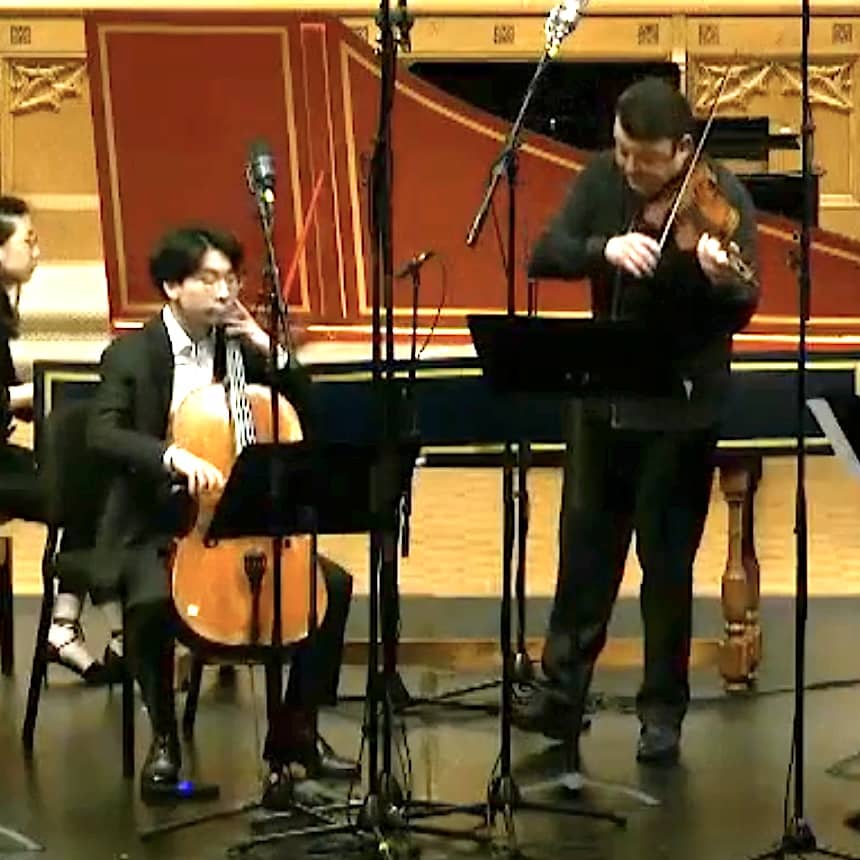
Cellist James Baik and violinist Vadim Gluzman
After quite a lot of Romantic music at the Festival, here was a step into the Baroque era. Though the music of Vivaldi can be played in a "modern" way, this performance leaned more toward the "historically-informed," using a harpsichord, played by Chicago-based Sun Chang and with Gluzman using a Baroque bow (though I don't think anyone else did!)
It was also at what I called "period-performance speed" - which is to say: fast! Baroque groups tend to go at quite a clip, I suspect because the Baroque bow is so nimble that it's like a race car - you just can't help but step on the gas.
Was it right on the edge of "too-fast"? Not for Baik - what a poised performer, and with lightning dexterity. A pleasure to watch, I hope I see him around town in Los Angeles!
Next came a performance of "The Four Seasons" - Vivaldi's famous a set of four concertos, each with four movements. For this, NSCMF featured violinist Julian Rhee playing the solo part for "Spring" (La primavera) and "Summer" (L'estate) followed by Hina Khuong-Huu performing solo in "Autumn" (L'autunno) and "Winter" (L'inverno). When not playing solo, they switched places playing in the small NSCMF ensemble that served as the accompanying orchestra.
Most striking to me about this whole performance was the pervading sense of support for these young musicians - just imagine - Vadim Gluzman - an internationally renowned soloist of established stature - is playing in your back-up band! And so is cellist Ani Aznavoorian - one of the best chamber players around - the list goes on. You couldn't have better support.
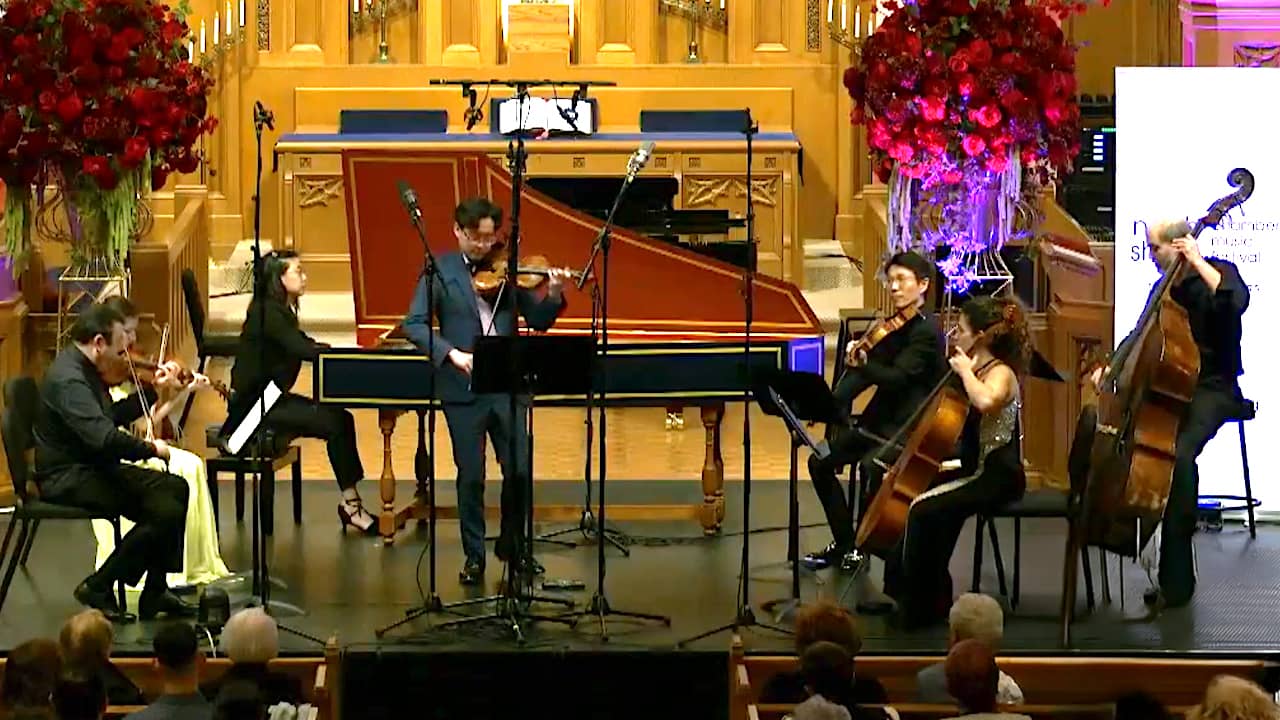
Violinist Julian Rhee plays Vivaldi with the NSCMF Strings
Rhee embraced the Baroque sound, using spare vibrato and a nice echo-y sound. I enjoyed his tasteful choice of decorations, which enhanced but never detracted from the music. The last movement of "Summer" was exciting and virtuosic, again at "period performance speed." Though the audience was asked to hold applause all the way to the end, they couldn't help but clap!
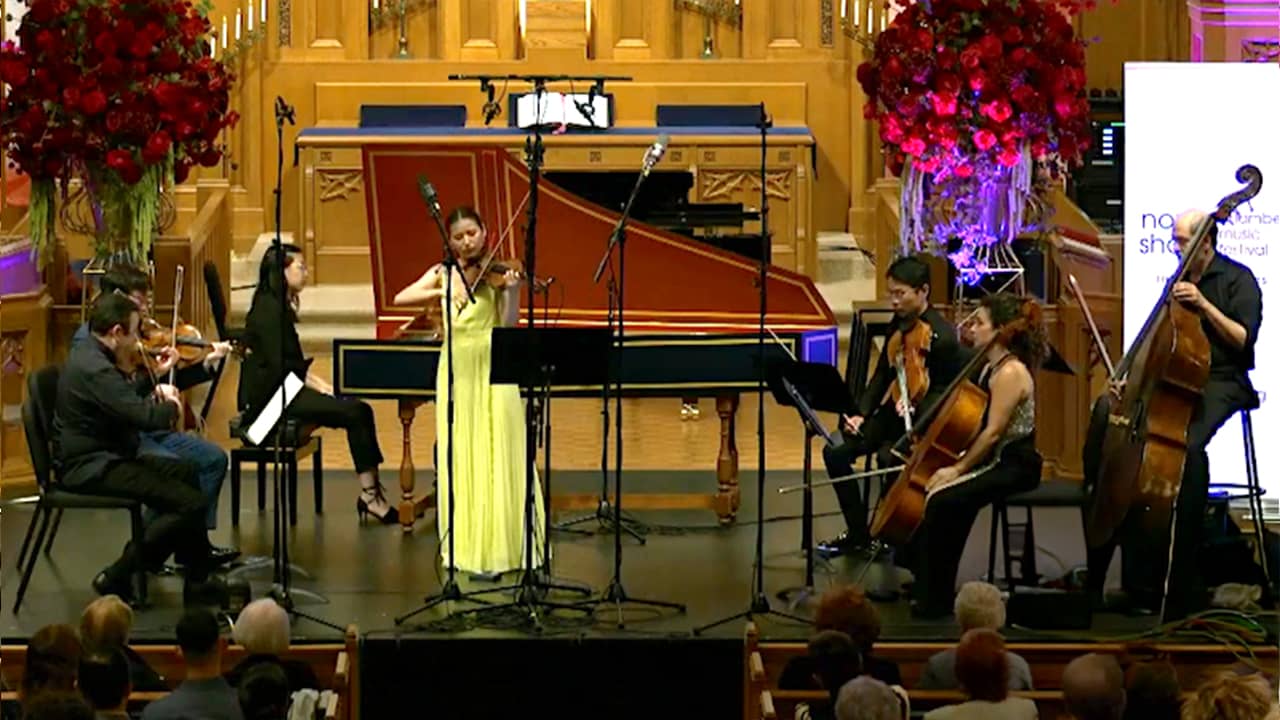
Hina Khuong-Huu plays Vivaldi with the NSCMF Strings.
Hina Khuong-Huu took over for "Autumn," and I found myself swept up in the program of this music - pondering the genius of Vivaldi anew. For example, in the second movement, the harmonic changes feel like shifting colors, set against a descending bass - an apt musical portrayal of leaves changing color, then falling to the ground. Same for the shivery cold of "Winter" - as often as I have heard (and played) this music, there is always something new to hear, and new people to play it and offer their interpretations.
You might also like:
- Supporting Young Musicians: The Story Behind the Arkady Fomin Scholarship Fund
- Spotlight on Violin: North Shore Chamber Music Festival Begins June 4
- Review: North Shore Chamber Music Festival's Season of Anniversaries 2025
* * *
Enjoying Violinist.com? Click here to sign up for our free, bi-weekly email newsletter. And if you've already signed up, please invite your friends! Thank you.
Replies
This article has been archived and is no longer accepting comments.
Violinist.com is made possible by...
Dimitri Musafia, Master Maker of Violin and Viola Cases
International Violin Competition of Indianapolis
Johnson String Instrument/Carriage House Violins
Subscribe
Laurie's Books
Discover the best of Violinist.com in these collections of editor Laurie Niles' exclusive interviews.

Violinist.com Interviews Volume 1, with introduction by Hilary Hahn

Violinist.com Interviews Volume 2, with introduction by Rachel Barton Pine







